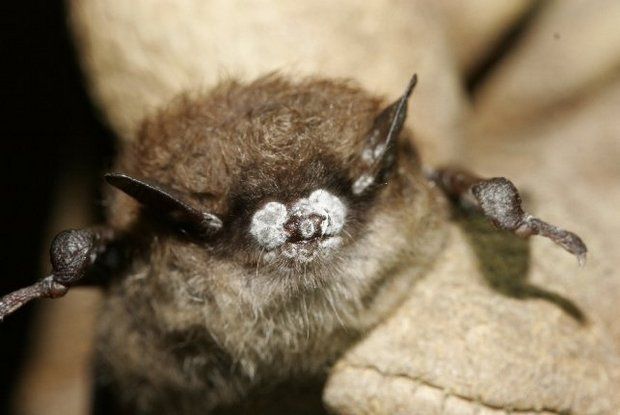
The Associated Press

The fungus that causes a deadly bat disease has been found for the first time in Mississippi, though the disease itself has not been found there.
The fungus was in samples collected during the winter from both hibernating bats and their roosts in three caves and one box culvert, Kathy Shelton, the state conservation biologist for South Mississippi, said Wednesday.
Samples from six other Mississippi caves and the bats in them were fungus-free, Shelton said in a telephone interview from the Holly Springs area. She had spent the day there looking for a bat cave listed in the Mississippi Museum of Natural Science’s Natural Heritage Program database so she could take samples there next winter.
The relationship between the disease called white-nose syndrome and the fungus called Pseudogymnoascus destructans can be compared to that between AIDS and HIV, said Craig S. Hood, a biology professor at Loyola University New Orleans. “You can find the disease-causing organisms, but that doesn’t mean necessarily that they’re infecting bats yet,” he said.
White-nose syndrome has killed more than 5.7 million bats in 25 states and five Canadian provinces since it was first found in New York in 2007, sometimes killing every bat in a colony. It is named for white patches of fungus that grow on a bat’s muzzle and other hairless areas.
The fungus was also found last year for the first time in Iowa, Minnesota and Arkansas, the U.S. Fish and Wildlife Service said in a news release Wednesday. Arkansas is the only one of those where the disease has been found.
The fungus has been found on 10 species of bats and the disease in seven of those species, according to a website set up by state and federal agencies, universities and other groups studying the syndrome. The three species that haven’t developed white-nose syndrome include southeastern bats, one of the two species found to be carrying the fungus in Mississippi.
Shelton said fungus also was found in tricolored bats, one of the seven species that have developed the syndrome in other states.
Tricolored and southeastern bats often are found in the same roosts, as they were in two of the Mississippi caves, Shelton said.
Hood said the disease may be less likely in Louisiana because the state has no caves, and bats that hibernate in more northern ranges aren’t known to hibernate deeply in Louisiana. However, he said, tricolored bats are common in Louisiana and migrating bats could spread the fungus to the state.
Shelton said the fungus was found in a box culvert near Louisville, Mississippi, the city slammed by tornadoes in April, and in caves on private land in Neshoba, Smith and Jasper counties.
The Smith County cave holds one of the state’s largest maternity roosts in the summer, she said. “We’re concerned about that.”
All of the caves are small and muddy, she said.
Tennessee and some other states have closed some caves to the public to try to keep the fungus from spreading. Tourists who go into Kentucky’s Mammoth Cave must leave via bio-security mats that scrub their shoes.
The owners of the three Mississippi caves want to keep people out, Shelton said. Signs to warn about the fungus may be one way, she said.
“We have to talk to other states and see what they’ve done,” she said.



